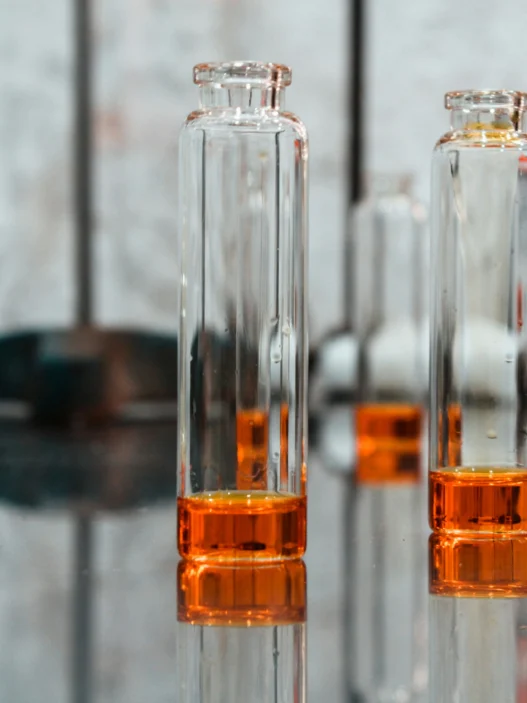Diphenylmethanol is a chemical compound that is commonly used in various industries such as pharmaceuticals, cosmetics, and perfumes. Its relevance to everyday life lies in its applications as a key ingredient in the production of medications, personal care products, and fragrances. Additionally, Diphenylmethanol plays a role in research as a building block for more complex molecules. Overall, the compound’s versatility and utility make it a significant component of numerous everyday products and processes.
Table of Contents:
- 💡 Commercial Applications
- ⚗️ Chemical & Physical Properties
- 🏭 Production & Procurement
- ⚠️ Safety Considerations
- 🔬 Potential Research Directions
- 🧪 Related Compounds
💡 Commercial Applications
Diphenylmethanol, also known as benzhydrol, finds various commercial and industrial applications. It is used as a fragrance ingredient in perfumes and cosmetics due to its floral and sweet aroma. Diphenylmethanol also serves as a chemical intermediate in the production of dyes, pharmaceuticals, and other organic compounds.
In the realm of drug and medication applications, diphenylmethanol is employed to synthesize various pharmaceuticals. It has been used in the synthesis of antihistamines, antifungal agents, and anti-inflammatory medications. Additionally, diphenylmethanol is utilized in the production of sunscreen products due to its ability to absorb and scatter ultraviolet radiation.
In the pharmaceutical industry, diphenylmethanol has been explored for its potential as a chiral auxiliary in asymmetric synthesis. By utilizing diphenylmethanol as a resolving agent, researchers aim to produce enantiomerically pure compounds with enhanced biological activity. Furthermore, diphenylmethanol derivatives have shown promise in the development of novel drug delivery systems for targeted therapy applications.
⚗️ Chemical & Physical Properties
Diphenylmethanol appears as a white solid with a mild, aromatic odor.
It has a molar mass of 184.24 g/mol and a density of 1.130 g/cm³. Compared to common food items, Diphenylmethanol has a higher molar mass and density.
Diphenylmethanol has a melting point of 69-70°C and a boiling point of 298-300°C. In comparison to common food items, Diphenylmethanol has higher melting and boiling points.
It is sparingly soluble in water and has a low viscosity. In contrast to common food items, Diphenylmethanol is less soluble in water and has a lower viscosity.
🏭 Production & Procurement
Diphenylmethanol, also known as benzhydrol, is typically produced through the Friedel-Crafts reaction by the reaction of benzene with benzyl chloride in the presence of a Lewis acid catalyst. This process leads to the formation of a carbocation intermediate, which then undergoes nucleophilic attack by benzene to form Diphenylmethanol.
The procurement of Diphenylmethanol can be achieved through various means, including purchasing from chemical suppliers or through in-house synthesis utilizing the aforementioned Friedel-Crafts reaction. Once procured, Diphenylmethanol can be transported in its solid form, typically in sealed containers to prevent exposure to air and moisture, which can degrade the compound. Proper handling and storage are essential to maintain the integrity of Diphenylmethanol during transportation.
In addition to its use in organic synthesis and pharmaceuticals, Diphenylmethanol can also be utilized as a fragrance ingredient in various consumer products. Its production and procurement require precise control of reaction conditions and handling procedures to ensure the purity and quality of the final product. The efficient production and transportation of Diphenylmethanol play a crucial role in its widespread industrial use.
⚠️ Safety Considerations
Safety considerations for Diphenylmethanol should be carefully observed due to its potential hazards. The substance may cause skin and eye irritation upon contact and can be harmful if inhaled or ingested. It is important to handle Diphenylmethanol with caution, wearing appropriate personal protective equipment such as gloves, goggles, and a lab coat to minimize exposure.
Diphenylmethanol poses several hazard statements that should be taken into consideration when handling the substance. It is classified as harmful if swallowed, causing irritation to the respiratory system. Additionally, it may cause skin and eye irritation upon contact and should be kept away from heat, sparks, and open flames due to its flammable properties. Proper storage and handling procedures should be followed to prevent accidents or exposure.
Precautionary statements for Diphenylmethanol should be strictly followed to ensure the safety of individuals handling the substance. It is recommended to wash hands thoroughly after handling and to avoid breathing vapors, mist, or gas. In case of skin irritation, immediate medical attention should be sought, and contaminated clothing should be removed. Diphenylmethanol should be stored in a cool, dry place away from incompatible materials and sources of ignition to prevent accidents.
🔬 Potential Research Directions
One potential research direction for Diphenylmethanol is the investigation of its potential applications as a building block in the synthesis of various organic compounds.
Another area of research could focus on exploring the potential biological activities of Diphenylmethanol, such as its antimicrobial or antiviral properties.
Furthermore, studies could be conducted to elucidate the environmental impact of Diphenylmethanol and its degradation products, as well as potential methods for its removal from water or soil.
🧪 Related Compounds
One compound that bears a structural resemblance to Diphenylmethanol is Benzhydrol. Benzhydrol, also known as diphenylcarbinol, consists of two phenyl groups attached to a central carbon atom, akin to Diphenylmethanol. This compound is commonly used in organic synthesis and as a precursor in the manufacturing of pharmaceuticals and fragrances.
Another related compound is Benzophenone. Benzophenone, comprising two phenyl groups attached to a carbonyl (C=O) group, has a structural similarity to Diphenylmethanol. This compound is widely utilized as a photoinitiator in polymer chemistry and as a UV filter in various cosmetic products due to its ability to absorb UV radiation effectively.
Furthermore, Dibenzyl ether is another compound that shares a structural resemblance with Diphenylmethanol. Dibenzyl ether is composed of two benzyl groups connected by an oxygen atom, akin to Diphenylmethanol. This compound is frequently employed as a solvent in organic reactions and as a fragrance ingredient in various personal care products.





